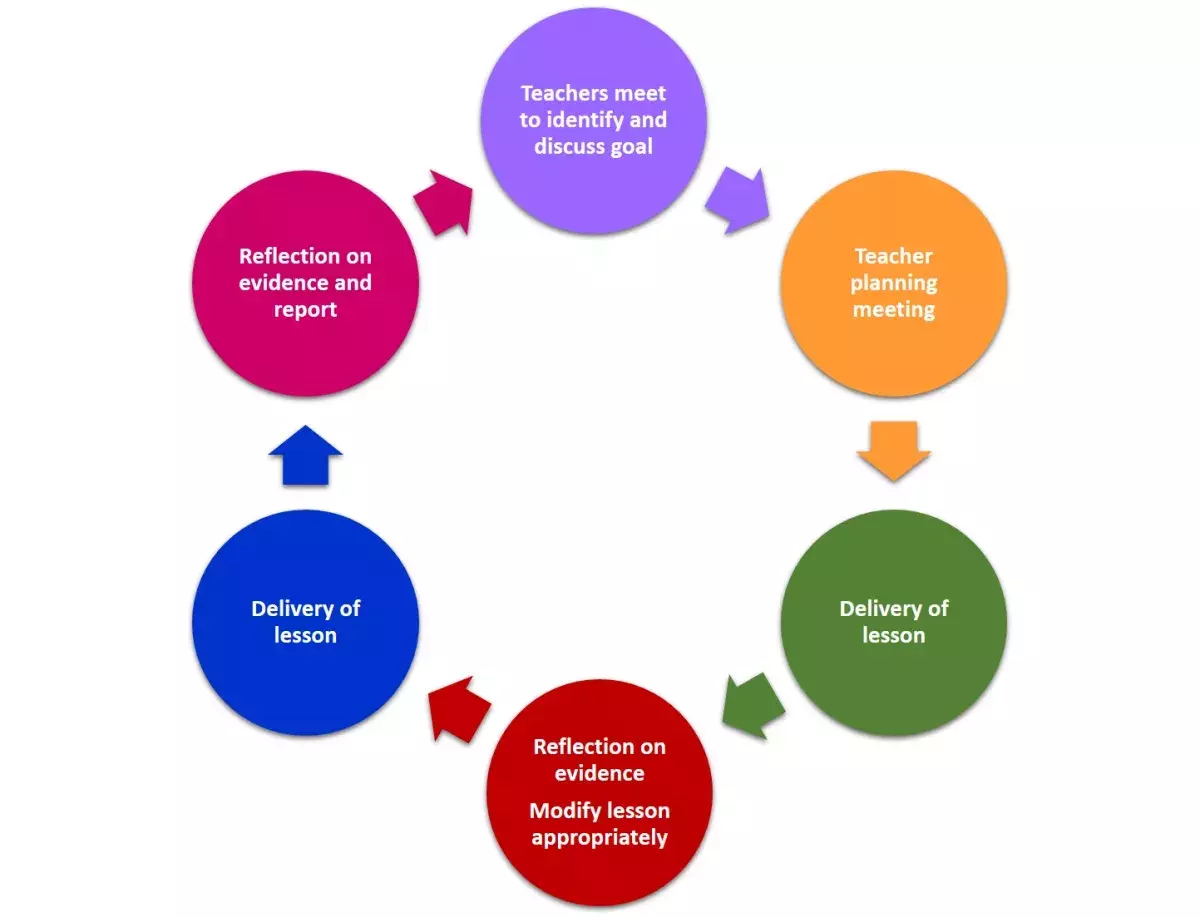- About us
- Schools
- Area planning
- Find your Schools’ Support Officer
- Best practice case studies
- Funding opportunities
- School vacancies
- Shared education
- #OpenToAll
- CSSC Award in Excellence in Educational Research
- Erasmus+
- CSSC Membership Survey 2022 – Results
- CSSC Sign Language programme - engaging with sign, a language for you and me
- Governors
- News
- Events
- Publications
- Ethos
- #OpenToAll
- Contact
- Search
Using Japanese lesson study to improve teaching and learning
As part of the CSSC building capacity programme the use of Japanese research lessons has been explored by senior leaders in controlled schools.

What is lesson study?
Lesson study (also called research lesson study, or RLS) is a model of professional development where teachers work collaboratively to incorporate new ideas and techniques into their teaching.
Small groups of teachers identify an area of teaching which could be improved. Working collaboratively they research and plan interventions that may improve teaching and learning, taking into account pupil needs. The ‘research lessons’ are then conducted, analysed and refined.
Where did lesson study originate?
Lesson study originates in Japan, where it has been used for over 140 years as a method of improving teaching and learning in Japanese schools.
In Japanese, ‘lesson study’ translates to ‘jugyo kenkyu’. ‘Jugyo’ means teaching and learning. ‘Kenkyu’ means study or research. Therefore lesson study is the study or research of teaching and learning.
Over time lesson study has been increasing used in East Asia, North American and Europe.
What are the key features of lesson study?
Although many different models exist, there are a number of common features of a school based lesson study project:
- Identifying the teaching area to be addressed
Based on their experience of pupil learning and impressions formed by reading relevant areas of educational research, a small group of teachers (typically three or four) will come together to identify the teaching area which requires attention.
- Planning
Teachers work collaboratively to research new techniques or interventions. This study leads to the production of a lesson plan. The plan will predict the responses pupils will have to the new techniques.
- Conducting the first research lesson
One of the teachers from the planning group will teach the agreed lesson plan. The other members of the planning group will observe the lesson and collect evidence of pupil learning.
- Post lesson discussion and analysis
The planning group meet to discuss the evidence they have gathered. The lesson is amended and refined in-line with the findings.
- Repeated cycles of research
Subsequent research lessons will be planned and taught, drawing on the findings from the post-lesson discussions and analysis.
- Sharing knowledge
The planning group should share their findings and refined lesson with other teachers, enhancing teaching for learning across the school.
CSSC support programme - Building capacity to embed evidence-based practice, conduct rigorous self-evaluation and promote school improvement
As part of the CSSC support programme, controlled schools are being encouraged to reflect on international models and perspectives of school improvement from high performing systems of education. One such model is that of Japanese lesson study.
Several controlled schools are starting their journey to explore lesson study as a means of encouraging professional collaboration and continuous improvement. Initial results have been very positive with schools reporting that teachers are embracing the process wholeheartedly.
Some controlled schools have been using lesson study effectively for several years.
Lesson study in Ballyclare High School
Ballyclare High School began using lesson study as an avenue for teacher professional development in the 2010/11 school year. All staff have the opportunity to engage in ‘research lesson study groups’ and over the last eight years the practice has become an increasingly popular choice for teachers.
Gareth Lenaghan, senior teacher with responsibility for teaching for learning at Ballyclare High School, said, “Research lesson study is based on cooperation, we were keen to have staff working together in a collaborative way to positively impact on school practice”.
Discussing the nature of the programme, he continued, “Initially it was thought that research lesson study would work best within subject areas, however the programme has evolved and teachers from different curricular areas are encouraged to work together. This has been most beneficial as staff identify the type of learning experiences which are effective, regardless of the curriculum content”.
“At the heart of the appeal of this approach is its collaborative structure which affirms each member of the group as an equal in the process, unlike the ‘reviewer’/‘reviewee’ model of Performance Review and Staff Development (PRSD)”.
A typical research lesson study group in Ballyclare High School has three to four members. The group will choose an area of research to focus on; previous examples include ‘The Learning Rainforest: Great Teaching in Real Classrooms’ by Tom Sherrington and Barak Rosenshine’s ‘Principles of Instruction’.
The group studies the research and develops classroom practice based on their learning. The next stage is to observe the practice in the classroom and discuss the effectiveness of the technique. At the end of the process there is an agreed method which is transferrable across all subject areas that can be shared with other teachers as evidence of good practice on staff development days.
Mr Lenaghan concluded: “Research lesson study is particularly effective because it is a non-threatening and non-hierarchal way for teachers to share and enhance effective practice in the classroom. It is rooted in the best contemporary education research whilst also emphasising the importance of the autonomous professional judgement of each member in the group”.
27 March 2019